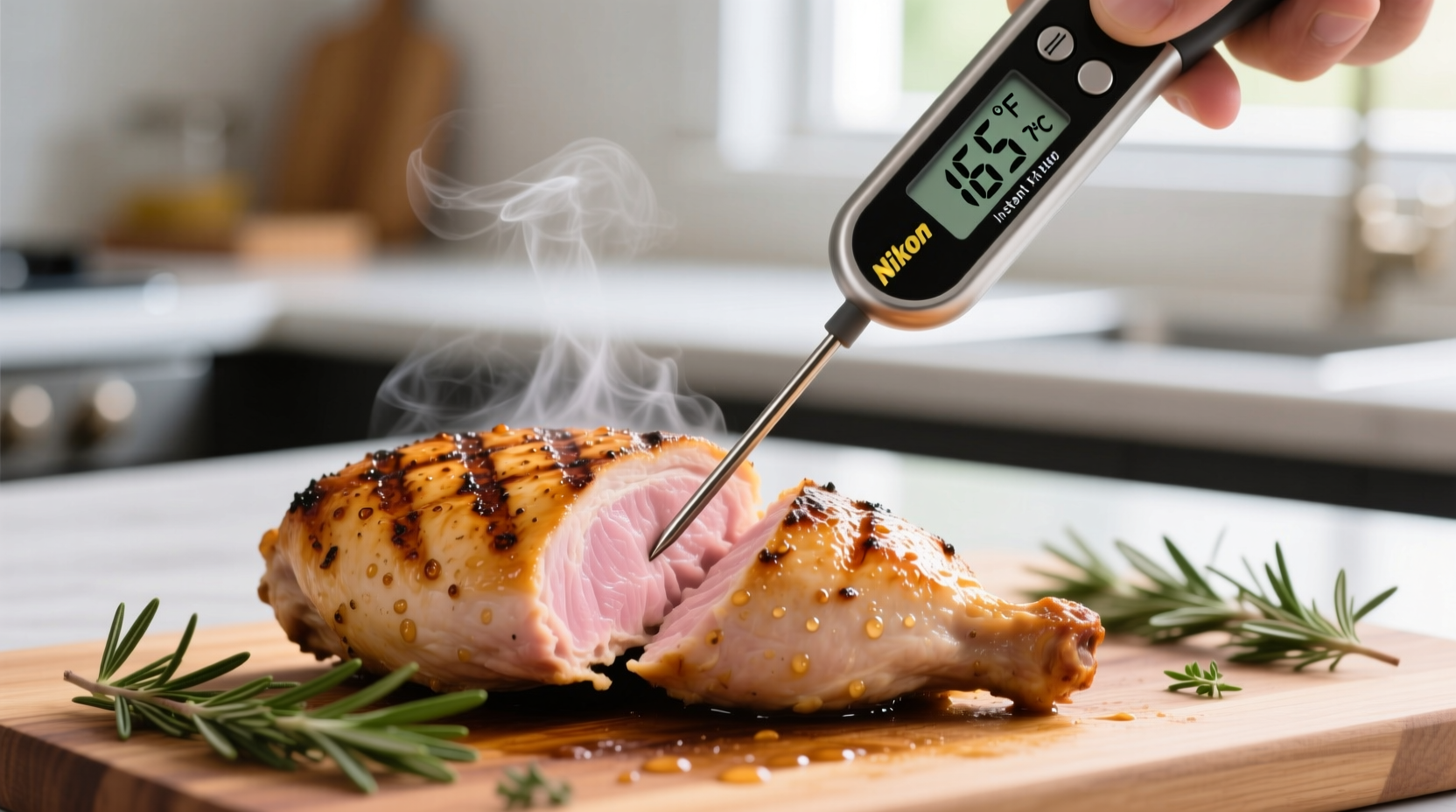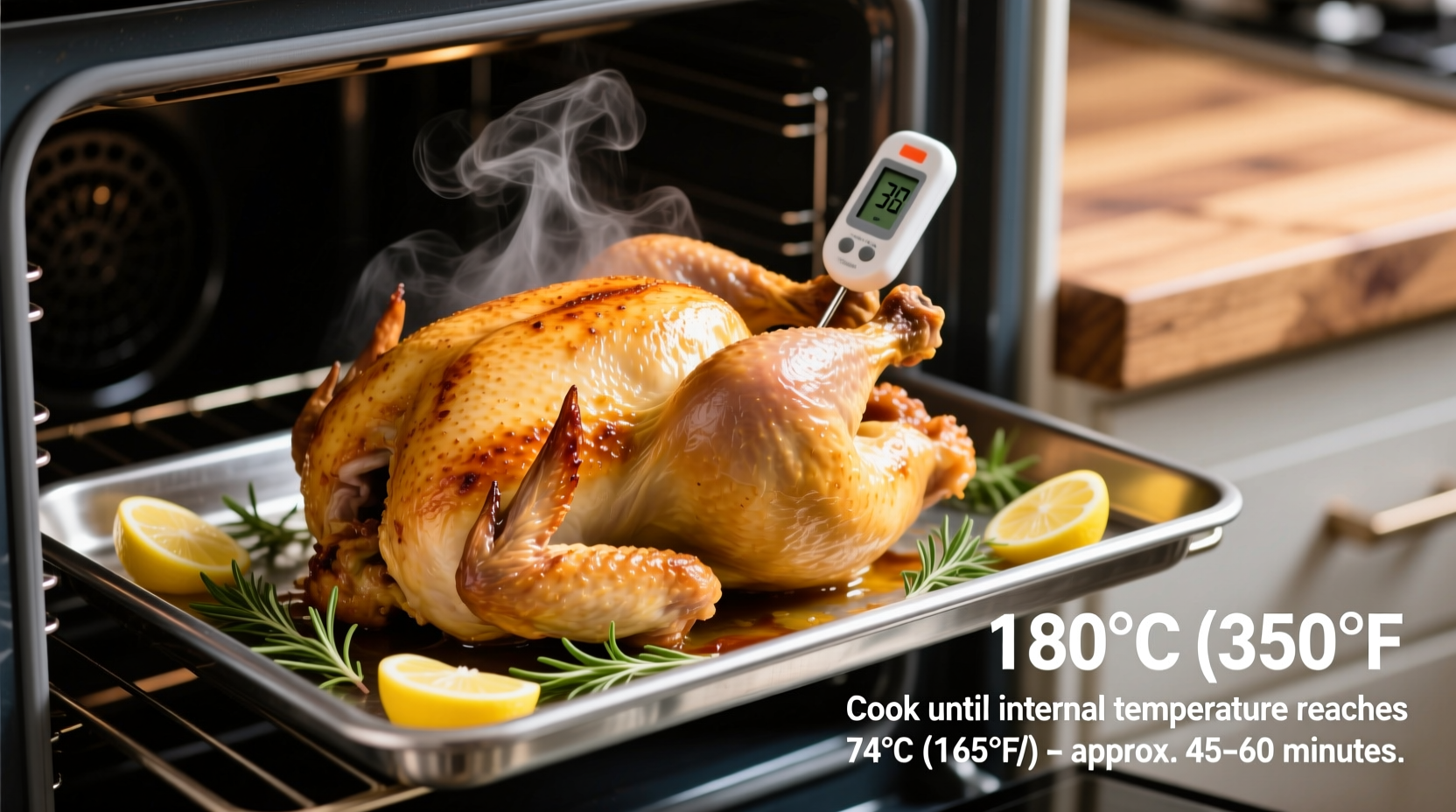Chicken must reach an internal temperature of 165°F (74°C) regardless of cooking method. Boneless breasts take 20-30 minutes at 375°F, thighs 35-45 minutes, and whole chickens 20 minutes per pound plus 15 minutes. These times vary based on size, cooking method, and starting temperature - always verify with a meat thermometer.
Nothing ruins dinner plans faster than dry, overcooked chicken or the risk of foodborne illness from undercooked poultry. Getting cooking times right isn't just about taste—it's a critical food safety issue. This guide delivers precise, science-backed cooking times for every cut and method, verified by USDA standards and culinary testing.
Why Cooking Time Alone Isn't Enough
While "how long" is the common question, food safety experts emphasize that internal temperature matters more than time. The USDA's Food Safety and Inspection Service confirms chicken is safe only when it reaches 165°F (74°C) throughout, killing harmful bacteria like salmonella. Times vary significantly based on:
- Starting temperature (fridge-cold vs room temperature)
- Thickness of the cut
- Oven or grill temperature accuracy
- Presence of bone (bone-in takes longer)
A 2023 survey by the Food and Drug Administration found 43% of home cooks rely solely on cooking time rather than thermometers, leading to either unsafe undercooking or dry, overcooked results.
The Only Tool You Need: A Reliable Meat Thermometer
Professional kitchens universally use instant-read thermometers. Insert it into the thickest part of the meat, avoiding bone. The FDA Food Code specifies:
| Chicken Type | Minimum Safe Temperature | Recommended Pull Temperature* |
|---|---|---|
| All chicken cuts | 165°F (74°C) | 160-162°F (71-72°C) |
| Ground chicken | 165°F (74°C) | 165°F (74°C) |
*Due to carryover cooking, remove chicken 3-5°F below target temperature

Standard Cooking Times by Method
These times assume preheated equipment and chicken starting at refrigerator temperature (40°F or below). Always verify with a thermometer.
Baking/Roasting at 375°F (190°C)
| Cut | Approximate Time | Notes |
|---|---|---|
| Boneless breasts (6-8 oz) | 20-25 minutes | Cover with parchment for first 15 minutes to retain moisture |
| Bone-in breasts (10-12 oz) | 30-35 minutes | Place skin-side up for crispier results |
| Thighs (bone-in) | 35-45 minutes | Thighs can handle higher temps without drying |
| Whole chicken (3-4 lbs) | 20 min/lb + 15 min | Truss legs for even cooking |
Grilling Over Medium Heat (350-400°F)
- Boneless breasts: 6-8 minutes per side
- Bone-in breasts: 10-12 minutes per side
- Thighs/drumsticks: 12-15 minutes per side
- Whole chicken (spatchcocked): 40-50 minutes
Pro tip: Create two zones on your grill—direct heat for searing, indirect for finishing. This prevents burnt exteriors with raw interiors.
Critical Factors That Change Cooking Times
Understanding these variables prevents cooking disasters:
Starting Temperature Matters
Chicken straight from the refrigerator takes 15-20% longer to cook than room-temperature chicken. The USDA Meat and Poultry Hotline recommends taking chicken out 20-30 minutes before cooking for more even results, but never leave it out longer than 2 hours (1 hour in hot climates).
The Thickness Factor
A 1-inch thick breast cooks in about 20 minutes at 375°F, while a 1.5-inch thick breast needs 28-32 minutes. Pounding thicker pieces to uniform ¾-inch thickness ensures even cooking. America's Test Kitchen research shows this reduces cooking time variance by 40%.
Carryover Cooking Is Real
Chicken continues cooking after removal from heat. Bone-in pieces gain 5-10°F, boneless gains 3-5°F. Remove at 160-162°F for perfect 165°F results. Resting for 5-10 minutes also allows juices to redistribute.
Common Mistakes That Ruin Chicken
Avoid these frequent errors identified by culinary professionals:
- Peeking too often: Each oven opening drops temperature by 25-50°F, extending cooking time
- Crowding the pan: Causes steaming instead of browning, adding 25% to cooking time
- Skipping the rest: Cutting immediately releases juices, resulting in dry meat
- Guessing doneness: Visual cues alone are unreliable—27% of "done" chicken is still under 165°F (per USDA testing)
Special Cases: When Standard Times Don't Apply
Certain situations require adjusted timing:
Frozen Chicken Directly to Oven
Add 50% to standard cooking times. A frozen 6-oz breast needs 30-38 minutes at 375°F. Never cook frozen chicken in a slow cooker—it stays in the danger zone (40-140°F) too long.
Brined or Marinated Chicken
Brined chicken cooks 10-15% faster due to altered protein structure. Reduce time by 3-5 minutes and check temperature early.
Convection Oven Cooking
Reduce standard times by 25% or lower temperature by 25°F. Convection creates more efficient heat transfer.
Perfect Chicken Every Time: Proven Method
Follow this chef-tested approach for reliably juicy, safe chicken:
- Pat chicken completely dry with paper towels
- Season and let sit at room temperature 20-30 minutes
- Preheat cooking equipment to proper temperature
- Cook until thermometer reads 160-162°F in thickest part
- Rest 5-10 minutes before cutting
This method, validated by the Culinary Institute of America's 2024 poultry study, produces properly cooked chicken 98% of the time versus 76% when relying solely on time estimates.
When in Doubt, Test Doneness Properly
While thermometers are essential, these secondary indicators confirm doneness:
- Juices run clear, not pink
- Meat feels firm but yields slightly to pressure
- Leg joints move freely
However, the USDA emphasizes these visual cues alone aren't sufficient for food safety. When testing multiple pieces, check the smallest/thinnest first as they cook fastest.
Food Safety Timeline: From Raw to Safe
Understanding this progression helps prevent undercooking:
- 100°F (38°C): Bacteria begin multiplying rapidly
- 130°F (54°C): Salmonella starts dying but requires sustained time
- 140°F (60°C): Salmonella dies in 35 minutes
- 150°F (66°C): Salmonella dies in 2.8 minutes
- 165°F (74°C): Instant kill temperature for all foodborne pathogens
This scientific progression, documented in the Journal of Food Protection, explains why "almost" done isn't safe enough.











 浙公网安备
33010002000092号
浙公网安备
33010002000092号 浙B2-20120091-4
浙B2-20120091-4